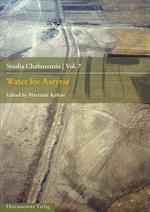Citation:

Abstract:
The imperial and provincial capitals of the Neo-Assyrian empire held populations far beyond the limits of the Bronze Age cities that preceded them. This accomplishment came in part from intensifying agricultural production on the lands adjacent to the cities. The irrigation systems of Nimrud and Nineveh have over a century of exploration, but there are still many details to be revealed, especially through remote sensing and field exploration. This paper analyses the irrigation systems between Nimrud and Arbail (modern Erbil) using two sources. The first are remote sensing datasets from a variety of declassified American intelligence missions: aerial photographs from the U2 spy plane, and satellite photographs from the CORONA (1960-1972) and HEXAGON (1971-1984) programs, many of which have not been used for non-intelligence research before. The second source are field observations of the Erbil Plain Archaeological Survey (EPAS) in the regions of Gwer, Shemamok, Erbil, Kawr Gosk, and Qala Mortka, between the Upper Zab and the Chai Bastora. These observations have revealed a complex palimpsest of both massive irrigation systems and small scale karez/qanat systems that can be difficult to untangle. It is certain, however, that the river terraces and plains surrounding Nimrud and Arbail were abundantly irrigated. It is possible that some of these canal features were also being used for downstream shipment of bulky agricultural products, which would further extend the sustaining areas of these great cities.